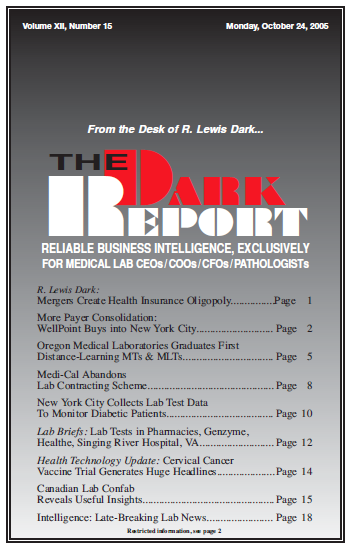THIS IS AN UPDATE ABOUT THE RACE to be first to market a vaccine to prevent cervical cancer. Merck & Co. is currently in the lead. On October 6, 2005, Merck released results of a trial that is part of a phase III study of its vaccine, called GARDASIL™ (a “quadrivalent human papillomavirus types 6, …
Cervical Cancer Vaccine Trial Generates Huge Headlines Read More »
To access this post, you must purchase The Dark Report.


